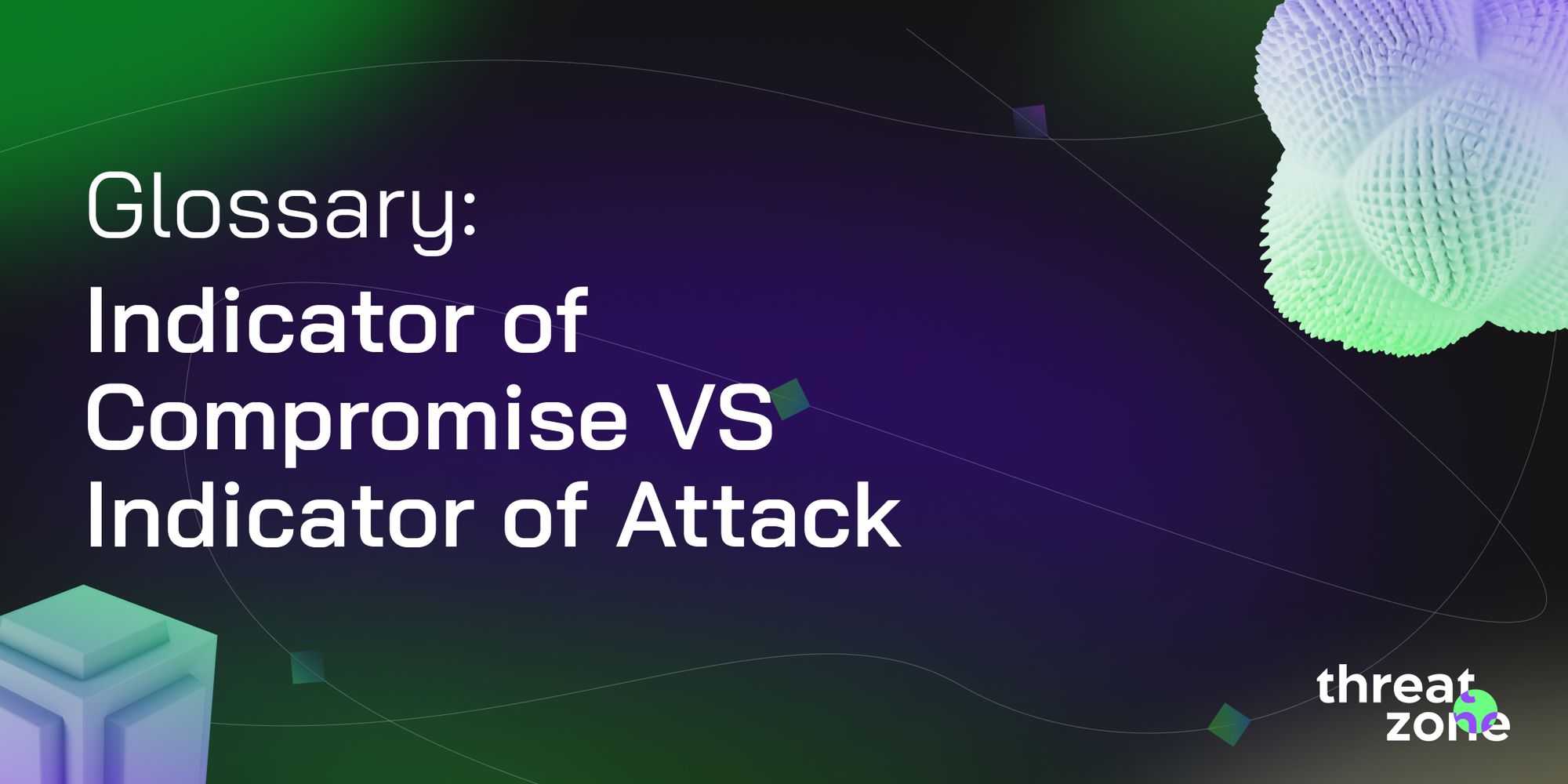Glossary: Indicator of Compromise VS Indicator of Attack

What is IOC
An Indicator of Compromise (IOC) is a piece of digital forensics that indicates that an endpoint or network has been compromised. These digital clues, like physical evidence, assist information security professionals in identifying malicious activity or security threats, such as data breaches, insider threats, or malware attacks.
Investigators can collect indicators of compromise manually after noticing suspicious activity or automatically as part of the organization’s cybersecurity monitoring capabilities. This information can be used to help mitigate an ongoing attack or remediate an existing security incident, as well as create “smarter” tools that can detect and quarantine suspicious files in the future.
When a company is the target or victim of an attack, the cybercriminal will leave traces of their activity in the system and log files. The threat hunting team will collect digital forensic data from these files and systems to determine whether or not a security threat or data breach has occurred or is currently underway.
Identifying IOCs is almost entirely the responsibility of trained information security professionals. These individuals frequently employ advanced technology to scan and analyze massive amounts of network traffic, as well as to isolate suspicious activity.
To better detect anomalous activity and increase response and remediation time, the most effective cybersecurity strategies combine human resources with advanced technological solutions such as AI, ML, and other forms of intelligent automation.
What is IOA?
An IoA is a “confirmed” event that has a high likelihood of being a real attack. IoAs serve as an early-warning system, providing evidence of attacks before they become more severe. They also help security teams identify and contain potentially damaging events before they result in system compromise, network downtime, or data loss by providing a more contextual picture of the attack chain.
When analyzing IoAs, the specific exploit is unimportant. IoAs, on the other hand, are concerned with detecting an attacker’s intent, actions, and methods. In short, IoAs examine an attacker’s tactics, techniques, and procedures (TTPs), rather than the type of threat or vulnerability.
Comparing Indicators of Compromise vs. Indicators of Attack
The primary distinction between indicators of compromise and indicators of attack is that IOCs are reactive while IOAs are proactive. That is, IOAs assist you in preventing a breach or limiting the damage caused by an ongoing breach, while IOCs assist you in cleaning up the mess left behind after the breach.
IOCs are also static, meaning they do not change over time. Because the event has already occurred, evidence of it will not change during the detection and mitigation process. That means IOC detection continues to function long after the attack has occurred.
IOAs, on the other hand, are dynamic because they are signs of an event unfolding and evolving. A cybercriminal will use a variety of attack techniques and stages to breach your defenses, so IOA detection relies on real-time monitoring of suspicious activity.
Thanks for reading!
To see an amazing malware sandbox 👉 https://app.threat.zone/
Follow us on Twitter and Linkedin 👇
https://twitter.com/threat_zone
https://www.linkedin.com/company/threatzone/


